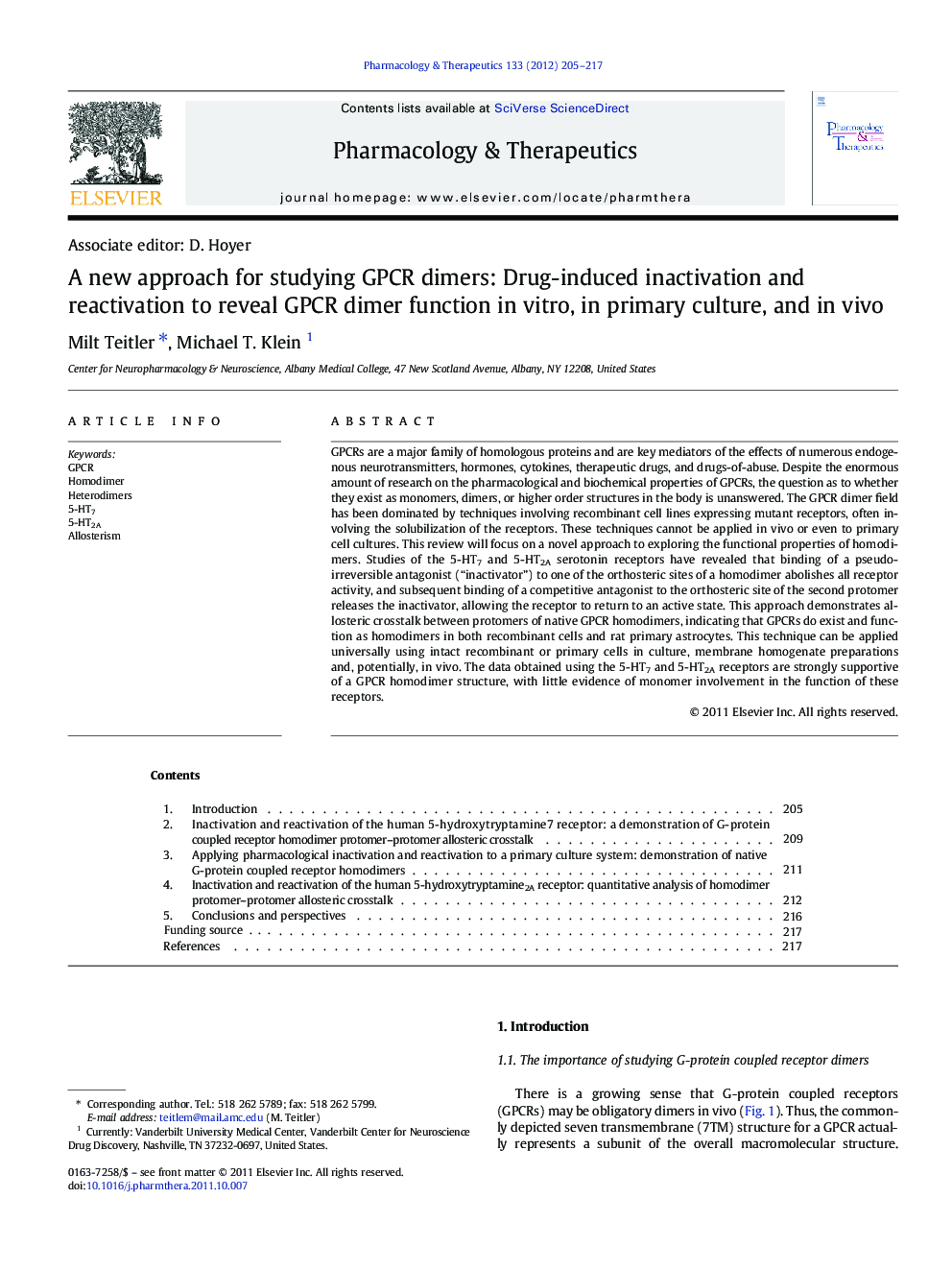| Article ID | Journal | Published Year | Pages | File Type |
|---|---|---|---|---|
| 2563290 | Pharmacology & Therapeutics | 2012 | 13 Pages |
GPCRs are a major family of homologous proteins and are key mediators of the effects of numerous endogenous neurotransmitters, hormones, cytokines, therapeutic drugs, and drugs-of-abuse. Despite the enormous amount of research on the pharmacological and biochemical properties of GPCRs, the question as to whether they exist as monomers, dimers, or higher order structures in the body is unanswered. The GPCR dimer field has been dominated by techniques involving recombinant cell lines expressing mutant receptors, often involving the solubilization of the receptors. These techniques cannot be applied in vivo or even to primary cell cultures. This review will focus on a novel approach to exploring the functional properties of homodimers. Studies of the 5-HT7 and 5-HT2A serotonin receptors have revealed that binding of a pseudo-irreversible antagonist (“inactivator”) to one of the orthosteric sites of a homodimer abolishes all receptor activity, and subsequent binding of a competitive antagonist to the orthosteric site of the second protomer releases the inactivator, allowing the receptor to return to an active state. This approach demonstrates allosteric crosstalk between protomers of native GPCR homodimers, indicating that GPCRs do exist and function as homodimers in both recombinant cells and rat primary astrocytes. This technique can be applied universally using intact recombinant or primary cells in culture, membrane homogenate preparations and, potentially, in vivo. The data obtained using the 5-HT7 and 5-HT2A receptors are strongly supportive of a GPCR homodimer structure, with little evidence of monomer involvement in the function of these receptors.
